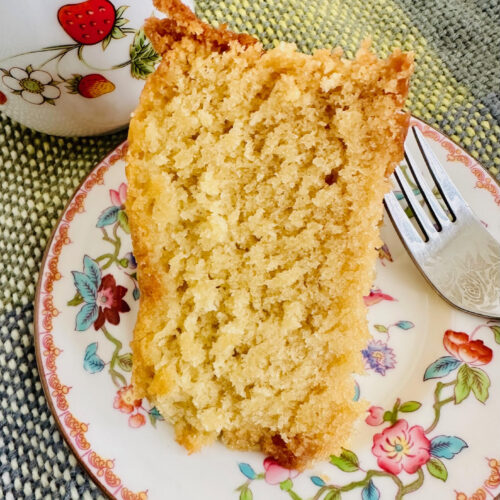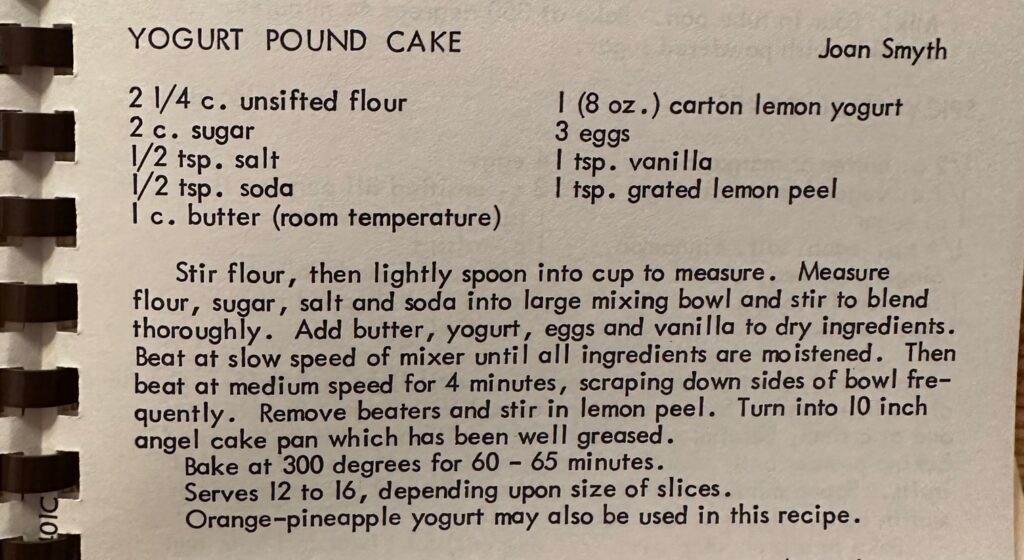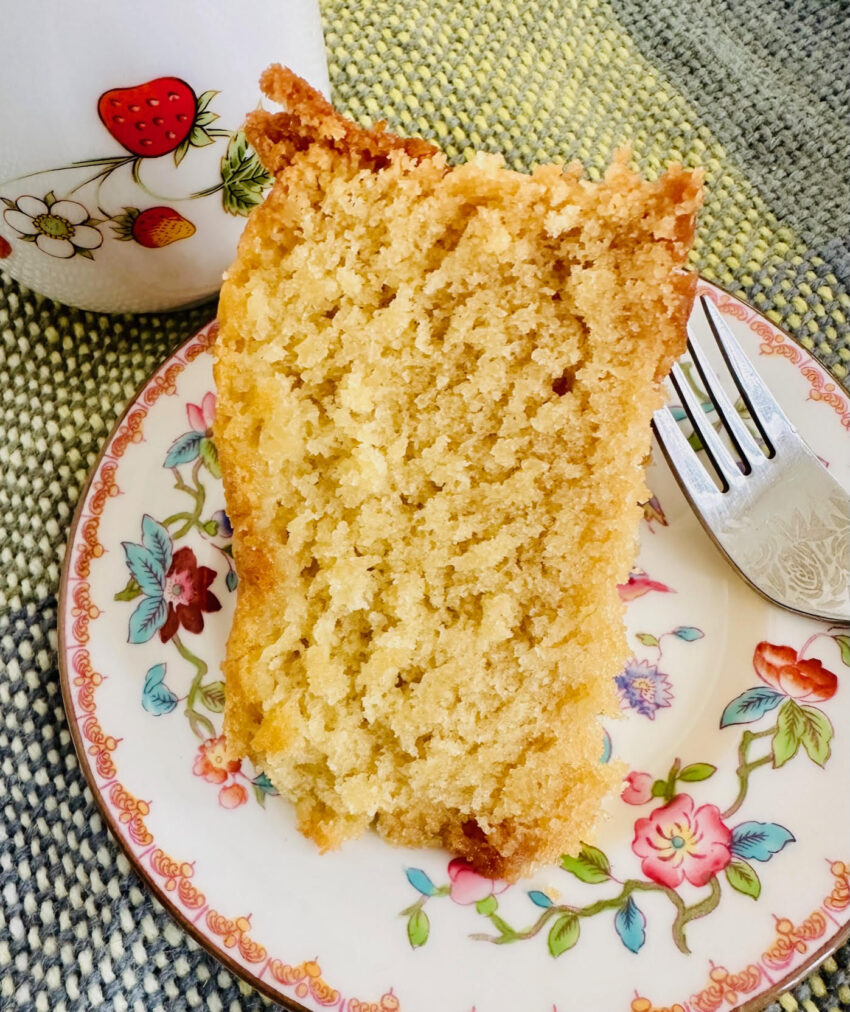I had lemons and yogurt leftover from other recipe development work so this caught my eye while I was indexing the book I found it in.
I have not seen lemon yogurt that isn’t Greek or Australian style in 8 oz containers pretty much ever. Single serving cups are normally 6 oz. I don’t see lemon yogurt sold in larger containers either–normally only plain or vanilla and occasionally blueberry or strawberry. My guess is it was a common size in the 1970s when the recipe was published. She suggested using orange-pineapple yogurt as an alternative and that sounds really good but I don’t think I’ve seen that flavor in stores since I was a small child and that wouldn’t solve the size problem.
Little issues like this make a recipe ripe for modernizing! I used plain yogurt instead, lots of zest, and some lemon extract for a boost of flavor–citrus juice tends to bake out of cakes.
The directions are little unusual for a cake, you mix together the dry ingredients then beat in the butter and yogurt for a long time. That’s different than the usual “cream butter and sugar together, add dry” method we see all the time but it seems to pop up now and again.
It is sort of coming into style once again. In the last few years, I’ve seen a lot of articles about this technique and they are calling it the “reverse creaming method” or “paste method” neither of which sound appealing. Betty Crocker called something similar the “double-quick method” because it was, well, quicker than the usual method and had you do some alternating of the wet and dry ingredients. It’s supposed to yield a more tender, dense, and moist while also being quicker to mix but personally, I don’t find it to be much faster.
It really is a super moist cake. The best thing to do would be to make two cakes that had identical directions but using the two different methods of mixing. I’m not quite up for that task as that would yield simply too much cake but maybe if I feel like making this again, I’ll try it and report back.
I have to admit, I found it difficult to get the butter to really mix in properly and had to beat it for a bit longer than 4 minutes. It was at room temperature, as were the other ingredients but even cubed there was just so much of it. Just keep mixing!
The cake is very flavorful I think would make a great dessert or snack with some coffee or tea. While the original recipe refers to it as a “pound cake” I feel like it’s a little moister and with a coarser crumb than what I’d think of as a pound cake which is why I tweaked the name.
It held up very well at room temperature in very humid conditions for a full four days.

Lemon Yogurt Cake
Ingredients
- 2 ¼ cup flour
- 2 cups sugar
- ½ teaspoon salt
- ½ teaspoon baking soda
- ½ teaspoon baking powder
- 1 cup cubed butter at room temperature
- 3 eggs at room temperature
- 8 oz plain yogurt at room temperature not Greek!
- 1 teaspoon vanilla
- ¼-1/2 teaspoon lemon extract
- Zest of 2 lemons
Instructions
- Preheat oven to 300. Thoroughly butter a 10-inch (standard) angel food cake pan. Set aside.
- In the bowl of a stand mixer or a large bowl, whisk together the flour, sugar, salt, baking soda and baking powder.
- Add the remaining ingredients and beat on low (using an electric mixer of some sort) for 4-6 minutes or until a thick, uniform batter forms.
- Pour into the prepared pan and bake for 1 hr or until a toothpick inserted near the center of the cake comes out clean or with just 1-2 dry crumbs.
- Cool in pan on wire rack 5 minutes, then remove from pan and continue to cool on rack.
Notes

adapted and updated from Joan Smyth’s recipe for Yogurt Pound Cake appearing in The Horatio Street Festival of Foods Cookbook, Greenwich Village, New York City compiled by The Horatio Street Association 1978
